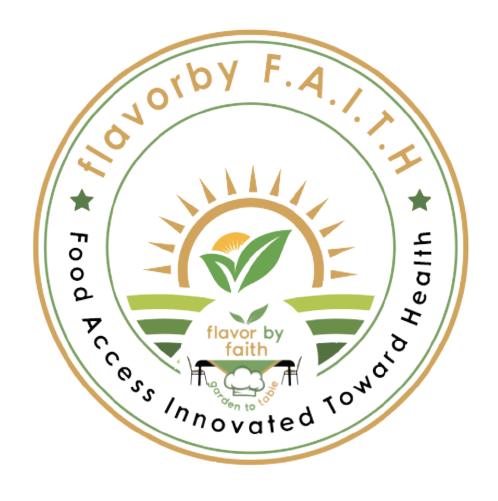Содержание
The team lead on this project is Sandra from the Chicago office who has 15 years experience as a project manager/team lead managing process improvement projects. Lessen the direction and spend time with individuals starting to coach them in relation to their roles within the team and the tasks that they have to perform. At the same time the manager will be challenging team members to take on extra capabilities in order to move the team on to the next stage. Bruce Tuckman was a psychological researcher who published a theory known as Tuckman’s Stages of Group Development in the year 1965.
The rules and regulations are being adhered to and people are working together positively. Relationships become stronger as people are more aware of each other. Strengths and weaknesses are realised and utilised accordingly. The role of the coaching manager in this stage is to ensure that this calm continues and that any behaviours that arise that may threaten the calm are channelled in the right direction. Also the manager has an important role in conveying information particularly in relation to the successes that are starting to occur within the team. As the team begins to work together, they move into the “storming” stage.
Stage 2: Storming
It is in this stage that the team begins to operate effectively and gains momentum in completing tasks towards accomplishing the team goal. Failure to deal with under-performance will lead to major team discontent and if under-performing employees are left to continue to under-perform then … In many ways there are no secrets to implementing effective performance management.
It is a fact that a team leader can make or break a team and the project he is in charge of. The performing stage of team development is the stage when the group is working at its best and has completed most of its allotted work. The members use each other’s strengths to reach peak capacity and enhance the levels of team efficiency and productivity. The group can gain clarity around metrics and vision to achieve desired success.
If effectively implemented, project management software allows a team to collaborate, communicate, and complete tasks efficiently. Compiled below is a list of just five project management tools to help your team better integrate and communicate. Storming usually arises as a result of goals, roles and rules all becoming confused and unclear. This results in confusion when different behaviours are evident and conflicts can arise with the potential for factions being created within the team. Storming is a challenging phase and the manager who has led the team through the forming stage well and is starting to feel quite good about progress may have quite a rude awakening.
#4 Performing
It is important to remember that even though a team may be “Performing”, reversion to earlier phases can still occur. The team has a strong sense of identity, phases of team development morale is high, and team loyalty is intense. To grow from this stage to the next, team members need to engage in collaborative problem solving.

For instance, a team sponsor will ensure that the team has the budget and the staff hours available to support the project. A highly functioning team requires the development of team members as well as the team as a whole. From your project experience, describe how the project kickoff meeting for one project could have been improved.
Top Project Management Software
Most high performing teams go through these five stages of team development. Remember that at any time this team could revert back to a previous stage. Or, let’s assume that Mohammed slips back into his old ways of keeping to himself and not sharing information with the team – this may cause the team to revert back to the “storming” stage. In this stage, the team leader is not involved in decision making, problem solving, or other such activities involving the day-to-day work of the team. The team members work effectively as a group and do not need the oversight that is required at the other stages.
As the forming stage is the stage where cliques can develop, the coaching manager should be aware of this and should be aware of the various alliances that will occur at this stage. Not all alliances will be counter-productive to the team’s future success but it pays for the coaching manager to watch and observe the behaviours of potential cliques. The challenge for the manager is basically to give an inert group of people who hardly know each the best start possible as a new team.
Team members accept each other’s differences and communicate openly, sharing ideas and giving feedback. There is a growing sense of belonging amongst team members and a desire to maintain the group. Individual team member behaviour can vary greatly during this stage. You may find that some team members are openly hostile and attempt to dominate the group, while others withdraw and remain silent. Relationships are also new at this point and team members tend to feel a strong need to be accepted by the group.
- Members learn to cooperate and begin to focus on team goals.
- At this point, the team leader should start transitioning some decision making to the team to allow them more independence but still stay involved to resolve any conflicts as quickly as possible.
- Sometimes the members become overwhelmed by the tasks, or they are unable to find the work balance and in some cases, the team leaders might be challenged by a member who will think that he can do a better job.
- It is at the performing stage where team members really concentrate on the team goals.
- Workgroups become a cohesive team when they learn to appreciate differences.
- A team needs to have a strong and good team leader who will play an active role in all the stages of the development process.
A lot depends on the composition of the team, the capabilities of the individuals, the tasks at hand, and of course the leadership from management. One thing is certain – no team passes over the storming phase. All teams must be prepared to go through the difficult and stressful times as well as reaping the benefits of the productive phases. The task of the coaching manager is to identify where along the path of team development his or her team is and then move it on to the next phase with the minimum of fuss and resistance.
If managers can demonstrate the skills and are not afraid to trust their employees, then peer appraisal can work for both manager and the team, and work … The visit of a sales manager to a sales executive out on their ‘territory’ should be an opportunity for growth and development for the executive, the sales … Forming – when the team meets and starts to work together for the first time. Promote a culture of active listening so that the environment can be non-judgmental and open.
Why Is Team Development Important?
This includes not allowing any one team member to control all conversations and facilitate contributions from all members of the team. The team leader will need to coach some team members to be more assertive and other team members on how to be more effective https://globalcloudteam.com/ listeners. The norming stage of team development is when the team begins to demonstrate team skills and to work as a cohesive group. You will find at times that there will be people who tend to hold back the storming process or perhaps prolong it.

Business has no place to let the odd individual hold things up. That may seem tough coming from a “coaching” manager but this is reality and in many cases management is a tough role. Building and maintaining a team with members of different capabilities is not an easy task.
This is when the team is at optimal performance and is able to accomplish tasks quickly because members flow through the process. This is when team members begin to feel comfortable with each other, learns how each operates in a team environment – and begin to share ideas and debate issues. There continues to be massive coverage in the press just now about how effective the skill of coaching can be both in the workplace and in people’s personal … Norming – when rules are finalised and accepted and when team rules start being adhered to.
Tuck Into Tuckman Team Formation And Performance
Some teams, however, do not move beyond this stage, and the entire project is spent in conflict and low morale and motivation, making it difficult to get the project completed. Usually teams comprised of members who are professionally immature will have a difficult time getting past this stage. The second stage, Storming, is characterised by competition and conflict. This is why organizations put so many resources into team development.
Project Manager Vs Product Owner
Encourage your team to share ideas and opinions through brainstorming sessions. To grow from this stage, team members need to build their collaborative ability. They need to learn how each individual team member operates and become skilled in coordinating their activities.
Introduction on how to use the SharePoint site that will be used for this project to share ideas, brainstorm, store project documentation, etc. Sandra has worked on projects with Sarah and Mohammed, but has never worked with the others. Sandra has been given a very tight deadline to get this project completed. This article provides background on each stage and an example of a team going through all five stages.
According to Tuckman’s theory, a team cannot develop overnight. It has to undergo all the five stages to achieve team dynamics and accomplish intended results. Team development is an approach where training and support are provided to a group of individuals so that they can work as an organized unit to achieve organizational goals. A team needs to share the same attitude and orientation to balance individual and common goal because only then can they work together and achieve team development. Note that one method for helping teams come together more quickly is the use of project management tools.
Take the time to allow the team to normalize to get back to the performing stage. Performing is the stage when the team has come together as a group and is operating at a high level of efficiency and accomplishing the task it was charged with. Team leaders need to make sure that the stronger personalities don’t inadvertently dominate the team and its outcomes. All members should be actively participating before this stage is complete. These teams of employees work cohesively toward a shared goal by utilizing the diversity of the team members to bring creative ideas and solutions to the project. A major advantage a team has over an individual is its diversity of resources, knowledge, and ideas.
Bruce Tuckman’s Stages Of Team Development
The team members also start to make significant progress on the project as they begin working together more effectively. The norms are often considered effective tools in tasks that enhance performance, avoids conflict, and encourages effective teamwork to achieve organizational goals and success. The norming stage of team development is the stage where team members learn to ignore petty issues, abide by group norms, appreciate group strength, respect each other and ensure that the group dynamics remain strong.
These are unwritten rules that take place naturally in the development process. Some leaders write and share them with team members for effective results. A team leader should be one who can notice issues at the onset and put a stop to establishing any kind of negative norms. The storming stage of the process is very important and the leader has to be extra vigilant in his efforts.
The interaction and communication also become open and this leads to better interactions. During new tasks, few conflicts might arise in the norming stage of team development but it becomes easier to address and sort it out cordially. The initial excitement and politeness are often replaced by anxiety, annoyance, frustration and disagreements. People come to realize that reality is very different from the initial glow of working together harmoniously. The storming stage of team development is significant as the leader has to step up and sort out all the issues. He will have to ensure that every member develops better understanding and communication and gives his hundred per cent for the welfare of the team.
In the adjourning stage of group development, it is an opportunity for the leader to help members prepare for their next step and encourage long-term connections. This is a simplistic view of a team working through the five stages of team development. Over the next few weeks, Sandra noticed that arguments/disagreements were at a minimum and when they did occur, they were worked out quickly without her involvement being necessary.
Team members “throw work over the wall” to other team members, with lack of concern for timelines or work quality. Organizations are only as strong as the groups of people who help them accomplish objectives. This stage can also mean a change in an employee’s job responsibilities and expectations. In this stage team members are comfortable with each other and utilize their different perspectives to find workable solutions. The stronger personalities will be evident during this stage. A team sponsor is a person who provides the team with the goal and the resources needed to accomplish that goal.

